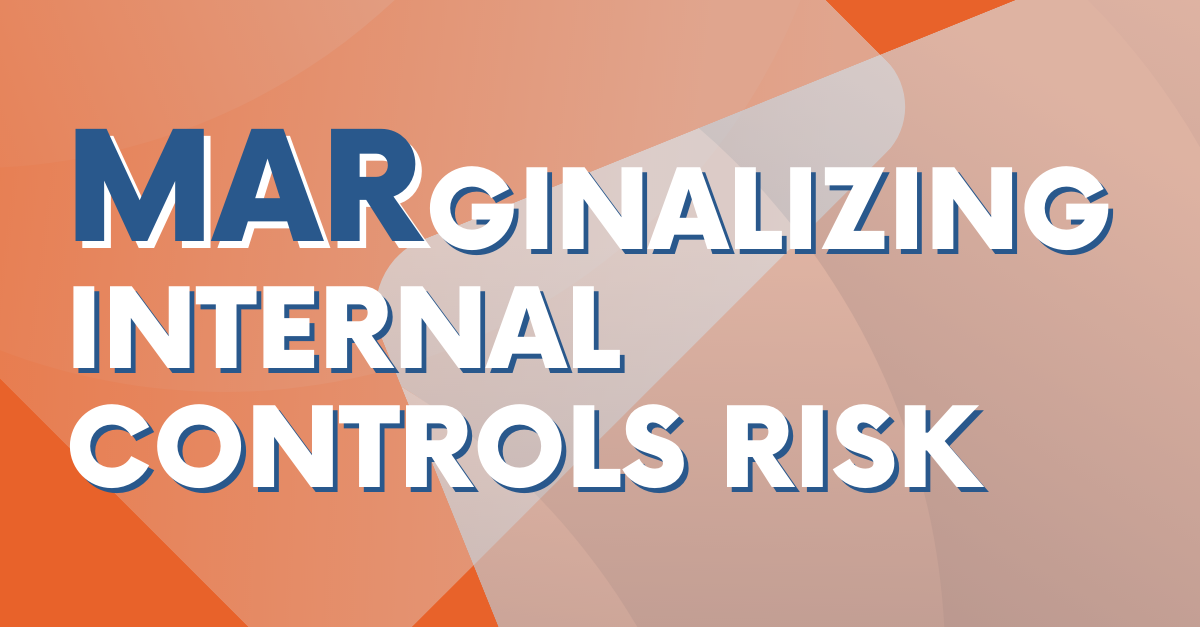May 31, 2022
Are You Maximizing Your MAR Control Testing?
Insurers with more than $500 million in direct written and assumed premium are subject to Model Audit Rule (MAR) requirements. However, often the requirements can be a challenge to decipher. Here, we’ll break down the MAR independence requirements and provide insight into how your company can benefit from having independent control testers. We will consider MAR independence from two perspectives:
1. What independence is required by the regulation?
2. What are the potential benefits of using independent testers?
What Does the MAR Say About Independence?
Let’s take a step back and examine what the guidance set forth by the National Association of Insurance Commissioners (NAIC) requires as it relates to independence. The NAIC doesn’t specify a framework for management’s review and evaluation of internal controls over financial reporting:
“The Model does not mandate a specific framework for management’s review and evaluation of internal controls…Under the Model, however, management, when making its assessment and preparing its report, has discretion as to the nature of the internal control framework used. Insurers shall have flexibility as to the frequency and scope of testing activities and the documentation provided upon examination to support the assertions.”
Appendix G Implementation Guide (Guide) for the Annual Financial Reporting Model Regulation (Model) (page G-16)
“Section 17D(2): Management must make an assertion regarding the effectiveness of the insurer’s Internal control over financial reporting to the best of its knowledge and belief after diligent inquiry. For purposes of filing the report, “diligent inquiry” means conducting a search and thorough review of relevant documents which are reasonably likely to contain significant information with regards to Internal control over financial reporting and making reasonable inquiries of current employees and agents whose duties include responsibility for Internal control over financial reporting.”
Appendix G Implementation Guide (Guide) for the Annual Financial Reporting Model Regulation (Model) (page G-14)
The MAR allows management the flexibility to decide what constitutes “diligent inquiry” and determine which controls are significant and critical. This flexibility extends to determining whether the individuals completing MAR testing are independent from the organization. Management may use its own judgment to determine the nature and extent of MAR testing procedures and who performs them.
Benefits of Using Independent MAR Testers
MAR internal control testing ultimately informs Management’s Report of Internal Control over Financial Reporting. While not required by the regulation, an independent team of internal control testers may benefit the company in a variety of ways, including but not limited to:
Fresh perspective – Using individuals that are independent of the company can add value by bringing a new set of eyes to processes and controls, which can lead to efficiencies that might not otherwise be identified.
Lower costs – Insurance examiners have the ability to scale back their own independent work and rely on the work performed by independent internal control testers, which may result in increased efficiency and decreased costs of regulatory examinations.
Peace of mind – Outsourcing this important exercise to an industry expert can provide management with peace of mind, knowing that the company’s internal controls are functioning efficiently and effectively.
The MAR can be more than a compliance exercise when you invite the right team of experts to the table.
Are you optimizing the benefits of your MAR compliance program? Are you just getting started and want to ensure you are set up for success? Contact the Johnson Lambert team to learn how we have helped our clients maximize their resources and get the most out of their MAR program.


